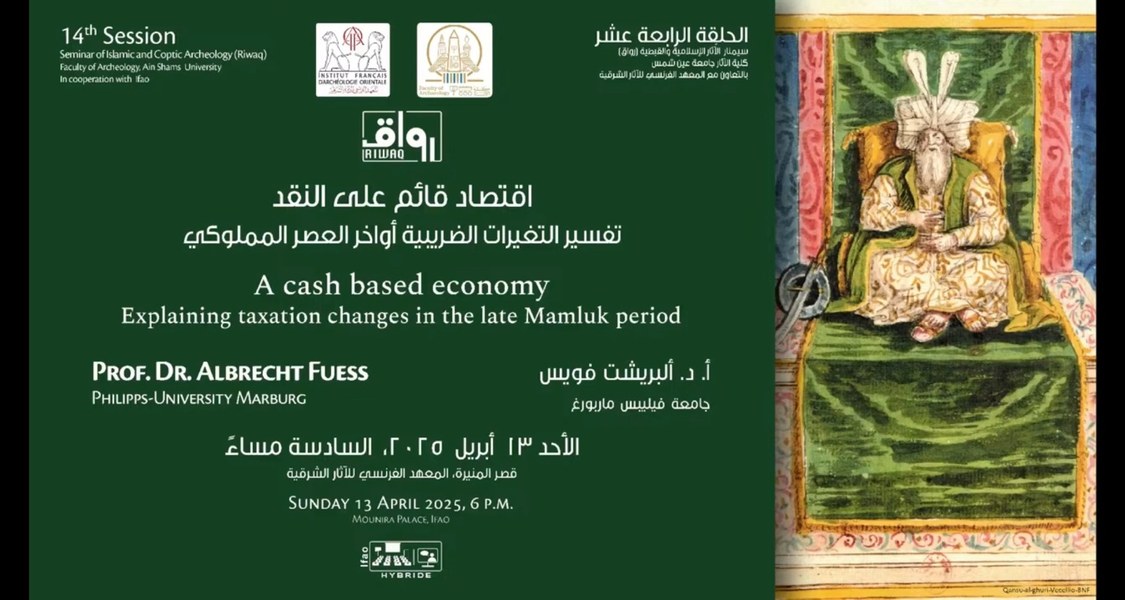14.04.2025 A cash based economy. Explaining taxation changes in the late Mamluk period.
Lecture in Arabic by Prof. Dr. Albrecht Fuess (13 April 2025)

A cash based economy. Explaining taxation changes in the late Mamluk period.
The Mamluk Sultanate depended on the organization of its revenues to ensure the functioning of the sultanate and the internal and external security of its citizens. The main source of income was agricultural production in the countryside. It was therefore important to know how much cultivable land there was, how much of it could be taxed and at what rate, which is why the land had to be surveyed by state officials. In Egypt, this land survey was called rawk. The surveyors determined the exact area and quality of the cultivable land of villages and districts. The tax value of a particular piece of land was determined as the product of its quality and the corresponding area. In the following, the question of how land was classified, what kind of revenue was generated for the state and what events led to a significant change in the Mamluk tax system in the 15th century will be explored. In order to answer these questions, this presentation will first discuss the different types of land categories in the Mamluk tax system. Particular attention will be paid to the balance between indirect land taxation, as found in the classical iqṭāʿ system, and other forms of dealing with land income, which, as we shall see, favored the so-called Waqfization of land ownership in the Mamluk Sultanate, which aimed at to gain more cash. Finally, it will try to explain why the Mamluks needed so much cash.
Kontakt
Prof. Dr. Albrecht Fuess